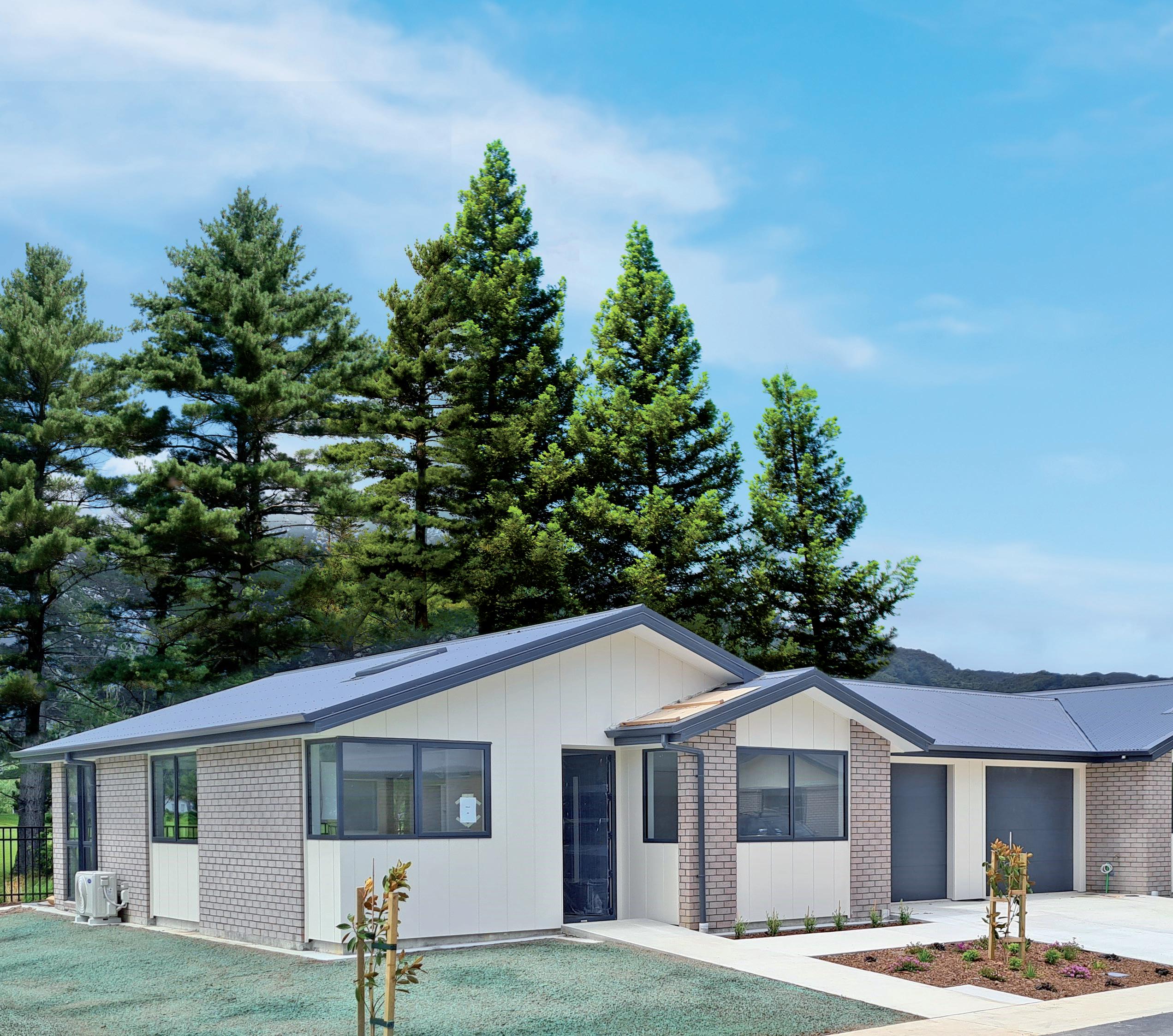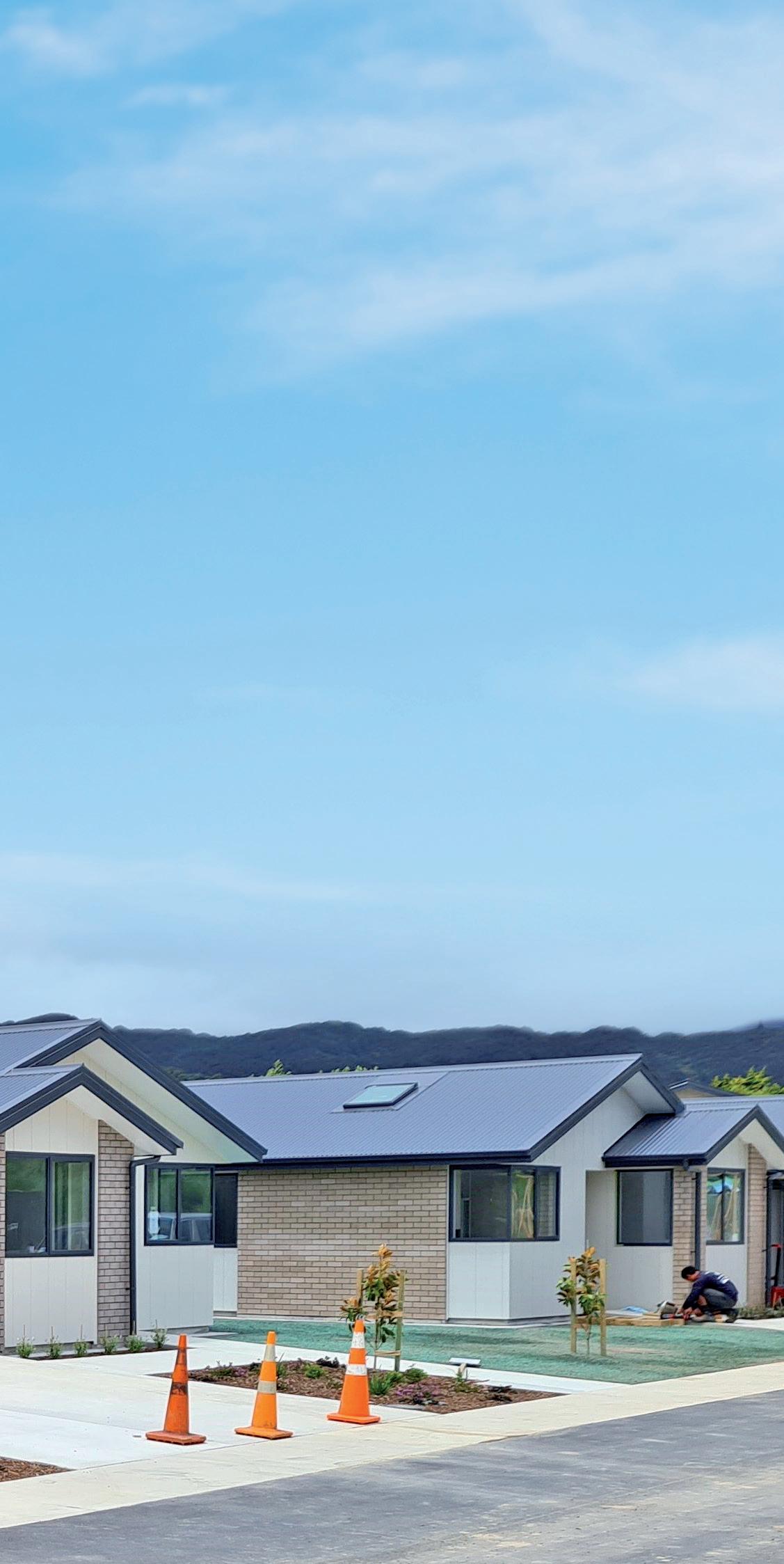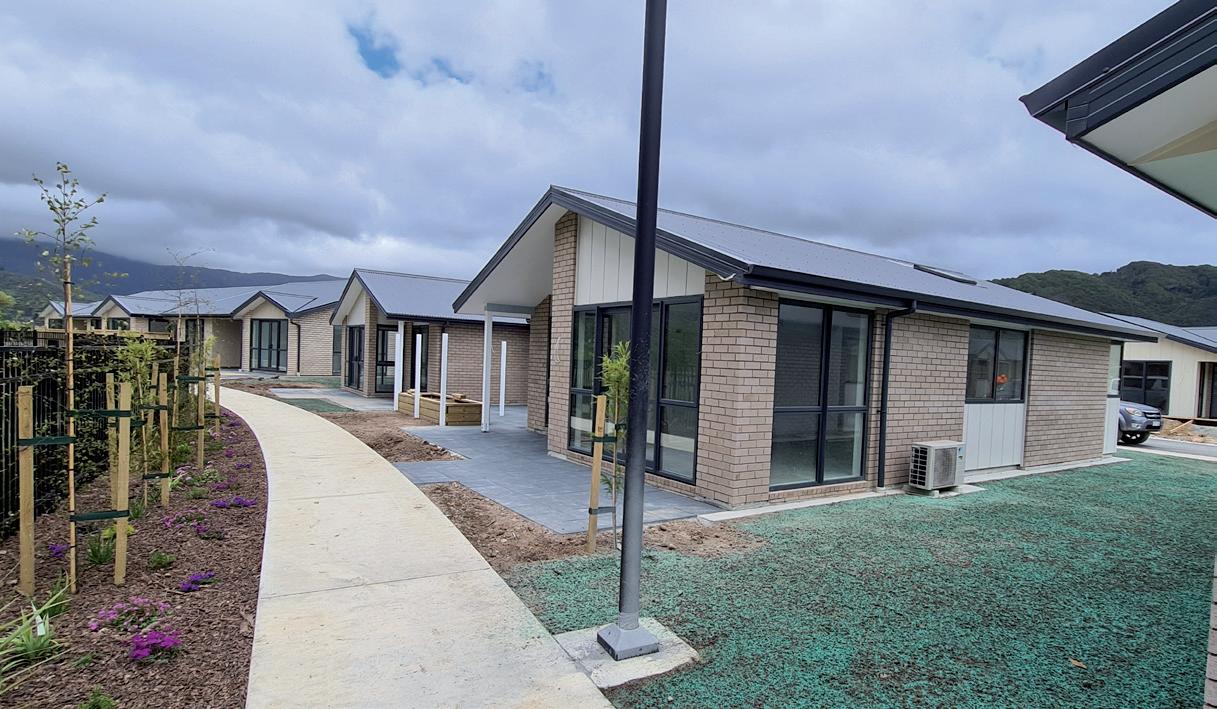
6 minute read
Are retirement villages affordable? Busting the myth!

How affordable really is retirement village living? Sometimes you might hear people saying it’s only for the wealthy. But increasingly those who never expected to be able to afford a retirement village unit are moving in to villages, having sold their freehold homes and freed up more capital than they anticipated.

ne resident at the Masonic Villages Trust’s new village in Wainuiomata says “I didn’t think I could ever afford it”. She also didn’t want to move out of Wainuiomata. When her neighbour of seventeen years opted to move into the new village under development locally she was surprised to find that she could indeed afford to buy there, and the two neighbours are now happily relocated in their local retirement village.
Nick Merritt, Operations Manager for the Masonic Villages Trust, says “Most of our residents have a property to sell, but don’t have a lot of money sitting in the bank.” She notes that it’s important to provide a choice and options, especially in smaller towns where the property boom may have been patchier. The Trust’s initial social housing for older people came into being over sixty years ago, supported by Housing Corporation loans, and underpinned by the firm conviction of the religious and welfare sector that there was a need for housing for the elderly. Those first units were one bedroom and relatively modest, but now older people expect more, which is one factor driving the development of retirement villages by charitable trusts.
About 25% of the Trust’s holdings are affordable rentals, scattered across a number of villages. The Trust’s recent policy of acquisition of existing villages has helped ensure that they can offer a variety of options, both geographically, and in the style and price of units. Warick Dunn, Chief Executive of The Masonic Villages Trust, notes that, for the older demographic, mobility and access is important: “People are now coming into our villages older, so design is crucial, as are aspects like double-glazing. Our facilities are now warmer and healthier than the housing our residents have come from because of improved design. We invest in high quality building materials and long-term design.” These factors also increase affordability, costing residents less to heat their homes and reducing their regular outgoings.
Arvida Retirement Villages, a large scale operator with national coverage, is also strongly focused on providing affordable options. General Manager Marketing and Sales, Tristan Saunders, says that from Arvida’s perspective there are two key elements to affordability: offering a wide variety of units, and affordability according to location. Arvida offers options starting from single bedroom studios, through two and three bedroom apartments, to townhouse and villas. He notes that “no one size fits all, so we offer a huge variation in size and product.”


Continued from page 27.
Affordability according to location works because prices are set relative to the local market, and positioned to allow potential residents to realise and retain money from the sale of their original property. This is ensured through Arvida’s annual central review of prices against local markets and advice from professional valuers, and allowing scope for buyer choice. Tristan notes that, to make sure this works, “We will always lag behind the market movement, and move cautiously when we do.”
Generally across New Zealand, retirement village units cost around 70% of the market price of the average freehold home in their surrounding community. Real Estate Institute of New Zealand median house price data gives the median price for May 2022 in Auckland as $1,125,000; Bay of Plenty $905,00; Wellington $895,200; and Canterbury $685,000. By contrast, Eldernet’s data on retirement village unit sales shows the average price for retirement village units in Auckland as $675,293; Bay of Plenty $419,667; Wellington $507,600; and Canterbury $471,594. This indicates how when older people sell their freehold home to move to retirement village they can free up extra capital in the process, which can then be used to fund retirement living and give them choices.
Affordability, and a range of offerings, is also key to ensuring that Arvida villages reflect a cross-section of their surrounding community. Taking the example of a new village, Waimea Plains, currently under development, Tristan explains that the Arvida design team works out what unit types will work best in each context. He says the aim is to have as much range as possible on offer in the early stages of development, and to keep prices as low as possible. Arvida ensures their offering ‘hits the spot’ by “putting people first, doing right by our people, and doing right by our design. That’s why we have such a wide range of residents in our village communities, representative of the wider community.”
The CEO of Howick Baptist Healthcare, Bonnie Robinson, says they focus on affordable housing options for older people because “we’re here to meet the needs of vulnerable older people, and to do that you have to determine who’s vulnerable and why.” From Bonnie’s perspective, among the most vulnerable are those who reach retirement without owning a mortgage free home. HBH has a rental village as well as its main licence-to-occupy retirement village, and is currently exploring how to provide more rental options – “we see that need just climbing, we’re currently getting at least two to three enquiries about rentals a week.”
These are usually from people who have been in a stable rental situation that changes, for example, they may have rented a granny flat long-term, but then the house is sold to a developer who wants them out. Bonnie notes that it’s hard to assess the positive impact for residents who secure a unit in HBH’s rental village: “Residents don’t want to talk about money, but once they settle in you can see their health and wellbeing improving as the stress and worry disappear. People are just so grateful to have somewhere secure they can afford, where they won’t be turned out.”
Bonnie predicts, as does Warick, that there will be an ongoing increase in the number of retirees who have no savings or resources other than national superannuation at retirement. Bonnie also expects the number who have very little margin, perhaps because of divorce, or unemployment late in life, will also increase. She says, “If you only have a moderate amount of money your options are quite limited.”
The last word on affordability of retirement village living and its positive impacts goes to Ken, who moved into HBH’s retirement village earlier this year after his wife died. He tells me, “I looked at all the local villages, and this felt like the best value. I saw the advert, and I had that amount of money. Compared to paying rates and maintaining a house, here it’s all incorporated and cheaper. I definitely have lower outgoings here. I enjoy the company. Here, you can get a meal if you want or need one, even though you’re independent. And the price I paid meant I had extra money for other activities like travel.”










